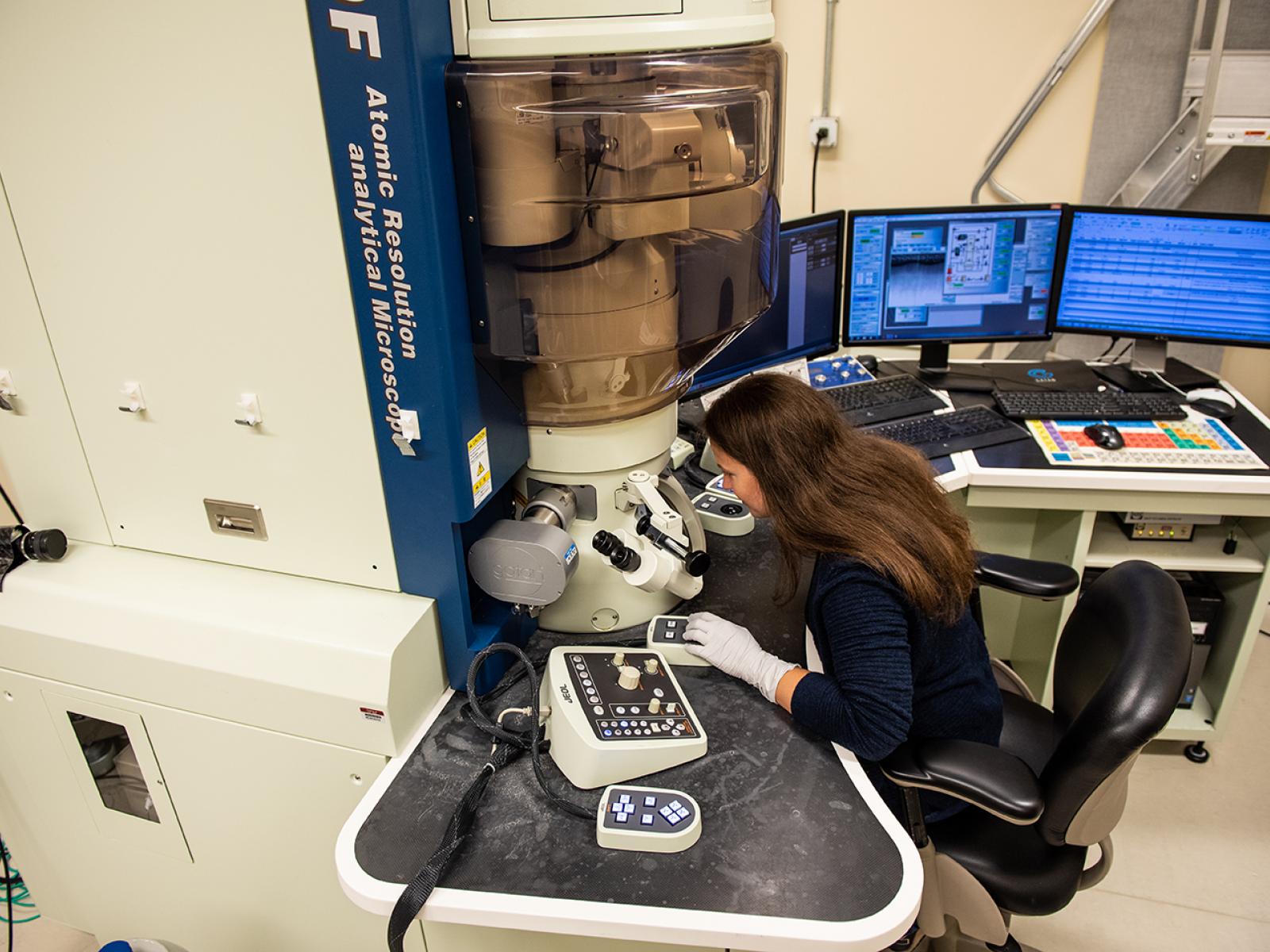JEOL ARM 200CF Scanning Transmission Electron Microscope
Located in PSF | Stewarded by Matthew Olszta and Danny Edwards, Reactor Materials and Mechanical Design Group

Researcher Karen Kruska uses the JEOL ARM 200CF STEM.
Andrea Starr | Pacific Northwest National Laboratory
Mission
The JEOL ARM 200CF supports numerous research programs in the U.S. Department of Energy mission areas. Its uniqueness lies in its atomic resolution imaging and analytical characterization capabilities which are aided by energy dispersive X-ray spectroscopy, electron energy loss spectroscopy (EELS), and precession electron diffraction (PED).
The laboratory in which this instrument operates is designed to mitigate all carbon contamination on samples through the use of a vacuum heater which boils off hydrocarbons and then removes them through a turbo pump. Additionally, the instrument’s sample loading area is equipped with a Zeiss Stereoscope that allows users to check the cleanliness of the holder before insertion. Integrity and performance of the machine is paramount; experienced users of the instrument are available to assist in all aspects of your analysis.
Features
- Cold field emission gun with 0.3 eV energy resolution and probe currents on the order of nanoamp.
- 0.9 sRad JEOL Centurio Detector with Thermo Pathfinder Software
- Gatan Digital Micrograph Suite 3
- Gatan 965 GIF with dual EELS and Fast Shutter Gatan DIF camera with high dynamic range, applicable for collecting diffraction patterns
- HREM plugins for Digital Micrograph: Smart Align with Template matching and PCA analysis
- High Angle Annular Dark Field and STEM Bright Field
- Top-spin PED for orientation mapping and strain analysis
- NanoCartographer 1.0 for record keeping and rapid crystallographic analysis
- Zeiss Smart Scope for easy sample loading.
- Vacutron quick vacuum heating of samples (>70˚C, 4.8x10-3 T) for removal of deleterious carbon contamination on samples.
Related publications:
Spurgeon SR, M Sassi, ES Ilton, EC Buck. 2019. "First atomic-scale actinide spectroscopy sheds light on key material: . Nanoscale Oxygen Defect Gradients in UO 2+ x Surfaces." Proceedings of the National Academy of Sciences of the USA, Vol. 116, Issue 35, 17181-17186.